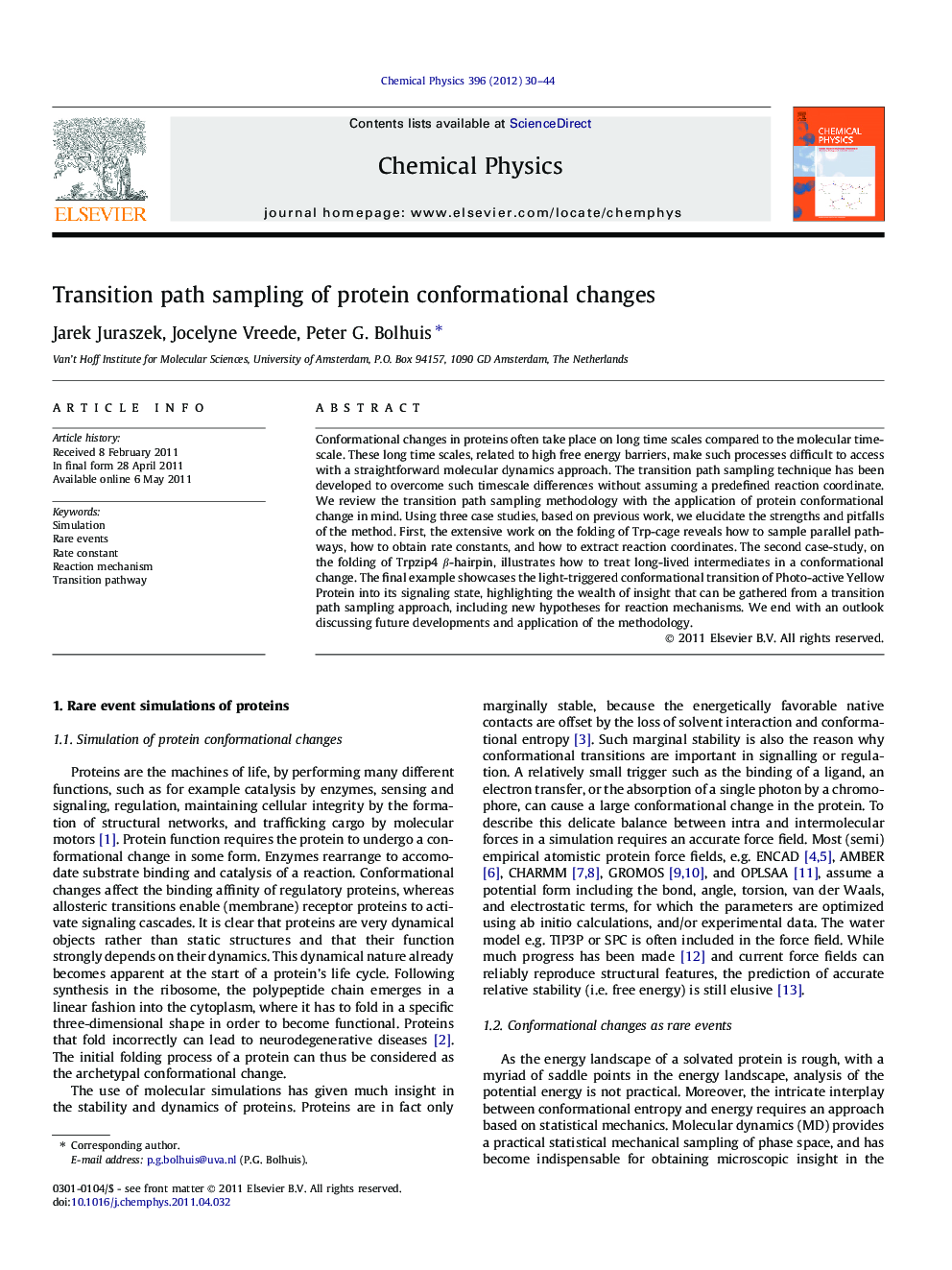| Article ID | Journal | Published Year | Pages | File Type |
|---|---|---|---|---|
| 5374520 | Chemical Physics | 2012 | 15 Pages |
Conformational changes in proteins often take place on long time scales compared to the molecular timescale. These long time scales, related to high free energy barriers, make such processes difficult to access with a straightforward molecular dynamics approach. The transition path sampling technique has been developed to overcome such timescale differences without assuming a predefined reaction coordinate. We review the transition path sampling methodology with the application of protein conformational change in mind. Using three case studies, based on previous work, we elucidate the strengths and pitfalls of the method. First, the extensive work on the folding of Trp-cage reveals how to sample parallel pathways, how to obtain rate constants, and how to extract reaction coordinates. The second case-study, on the folding of Trpzip4 β-hairpin, illustrates how to treat long-lived intermediates in a conformational change. The final example showcases the light-triggered conformational transition of Photo-active Yellow Protein into its signaling state, highlighting the wealth of insight that can be gathered from a transition path sampling approach, including new hypotheses for reaction mechanisms. We end with an outlook discussing future developments and application of the methodology.
Graphical abstractWe review how the transition path sampling methodology allows assessing the long time dynamics of protein conformational changes by discussing three case studies.Download full-size imageHightlights⺠Long time protein dynamics is difficult to assess by simulation. ⺠Transition path sampling has been developed to overcome such difficulties. ⺠We review the transition path sampling methodology. ⺠Three case studies on protein conformational change highlight strengths and pitfalls.
